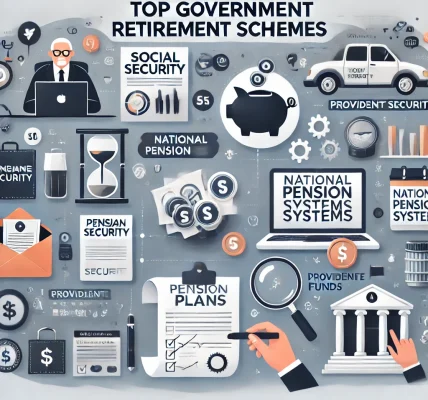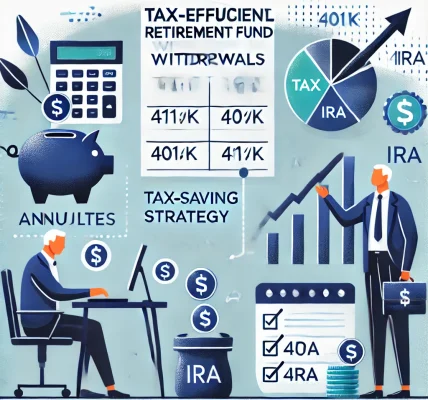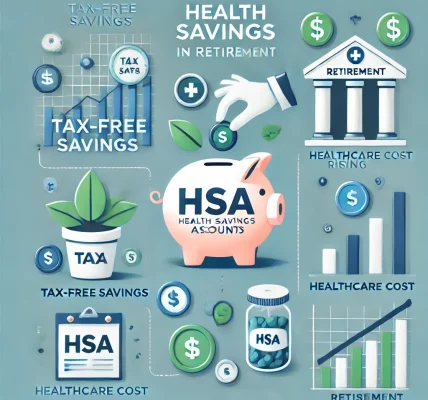Planning for retirement is crucial for securing a financially stable future. One of the most effective ways to save for retirement is through employer-sponsored retirement plans. These plans not only provide a structured way to save but also come with benefits such as tax advantages and employer contributions.
In this guide, we will explore different types of employer-sponsored retirement plans, their benefits, and key factors to consider when choosing the right one for your needs.
1. What Are Employer-Sponsored Retirement Plans?
Employer-sponsored retirement plans are financial savings programs offered by employers to help their employees save for retirement. These plans are designed to provide tax benefits, employer contributions, and long-term investment opportunities.
Key Features:
- Contributions may be pre-tax or after-tax (Roth).
- Employers may match a portion of employee contributions.
- Funds grow tax-deferred until retirement.
2. Types of Employer-Sponsored Retirement Plans
There are several types of employer-sponsored retirement plans, each with unique features and benefits. The most common ones include 401(k), 403(b), 457 plans, pension plans, and SIMPLE IRA plans.
A. 401(k) Plans (Most Common in Private Sector)
A 401(k) plan is a defined contribution plan that allows employees to contribute a portion of their salary on a pre-tax or Roth (after-tax) basis.
Key Benefits:
- Employers may offer matching contributions.
- Contributions and earnings grow tax-deferred.
- Employees have investment options, such as stocks, bonds, and mutual funds.
Contribution Limits (2024):
- Employee Contribution Limit: $23,000
- Catch-Up Contribution (Age 50+): $7,500
- Employer + Employee Max Contribution: $69,000
B. 403(b) Plans (For Public Schools & Nonprofits)
A 403(b) plan is similar to a 401(k) but is available for employees of public schools, churches, and tax-exempt organizations.
Key Benefits:
- Works like a 401(k) with tax-deferred growth.
- Often includes lower administrative costs.
- Some organizations offer a faster vesting schedule.
C. 457 Plans (For Government & Nonprofit Employees)
A 457(b) plan is designed for state and local government employees and certain nonprofit organizations.
Key Benefits:
- Contributions are tax-deferred, reducing taxable income.
- No early withdrawal penalty before age 59½ if you leave your job.
- Higher contribution limits compared to IRAs.
D. Pension Plans (Defined Benefit Plans)
Pension plans, or defined benefit plans, provide employees with a fixed monthly payment upon retirement based on salary and years of service.
Key Benefits:
- Employer-funded, ensuring a guaranteed retirement income.
- No investment risk for employees.
- Typically offers survivor benefits for spouses.
E. SIMPLE IRA Plans (For Small Businesses)
A SIMPLE IRA (Savings Incentive Match Plan for Employees) is a retirement plan for small businesses with fewer than 100 employees.
Key Benefits:
- Easier and less expensive to administer than 401(k)s.
- Employers are required to contribute either a match (up to 3%) or a flat 2% for all employees.
- Tax-deferred growth with lower contribution limits.
3. Employer Matching Contributions: Free Money for Your Retirement
Many employers match employee contributions up to a certain percentage, which significantly boosts retirement savings.
Example:
- Your employer offers a 100% match up to 5% of your salary.
- You earn $50,000 per year and contribute 5% ($2,500).
- Your employer matches that $2,500—doubling your savings!
Tip:
Always contribute at least enough to get the full employer match—otherwise, you’re leaving free money on the table.
4. Tax Benefits of Employer-Sponsored Retirement Plans
Pre-Tax Contributions (Traditional 401(k), 403(b), 457)
- Reduce taxable income.
- Taxes are paid when withdrawing funds in retirement.
After-Tax Contributions (Roth 401(k), Roth 403(b))
- Pay taxes now, but withdrawals (including earnings) are tax-free in retirement.
Employer Contributions
- Are tax-deductible for employers.
- Grow tax-free until withdrawn by employees.
5. Vesting Schedules: When Does Your Employer’s Money Become Yours?
Vesting refers to the process by which employees gain full ownership of employer contributions.
Types of Vesting Schedules:
- Immediate Vesting – Employees own 100% of employer contributions immediately.
- Graded Vesting – Ownership increases gradually (e.g., 20% per year over 5 years).
- Cliff Vesting – Employees gain full ownership after a specific number of years (e.g., 100% after 3 years).
Why It Matters:
If you leave your job before becoming fully vested, you may lose some or all of your employer’s contributions.
6. Withdrawal Rules & Penalties
Withdrawing retirement savings before retirement can lead to taxes and penalties.
Standard Withdrawal Rules:
- Withdrawals before age 59½ may incur a 10% early withdrawal penalty.
- Required Minimum Distributions (RMDs) start at age 73 for most plans.
Exceptions to the Early Withdrawal Penalty:
- Hardship withdrawals (medical expenses, disability, education, first-time home purchase).
- Substantially equal periodic payments (SEPPs) allow penalty-free withdrawals if taken consistently.
7. Choosing the Right Employer-Sponsored Plan
When selecting a retirement plan, consider the following factors:
- Employer Matching – Choose a plan with the highest match.
- Investment Options – Look for diverse investment choices.
- Fees – Lower fees mean more money stays in your account.
- Vesting Schedule – Ensure employer contributions align with your career goals.
Final Thoughts
Employer-sponsored retirement plans provide a powerful way to save for the future, with tax advantages, employer contributions, and long-term investment growth. Whether you have a 401(k), 403(b), pension, or SIMPLE IRA, understanding your plan’s benefits and rules is crucial for maximizing your retirement savings.
Key Takeaways:
✅ Contribute enough to get the full employer match. ✅ Choose between pre-tax and Roth contributions based on your tax situation. ✅ Pay attention to vesting schedules and withdrawal rules. ✅ Diversify investments and plan for long-term growth.




